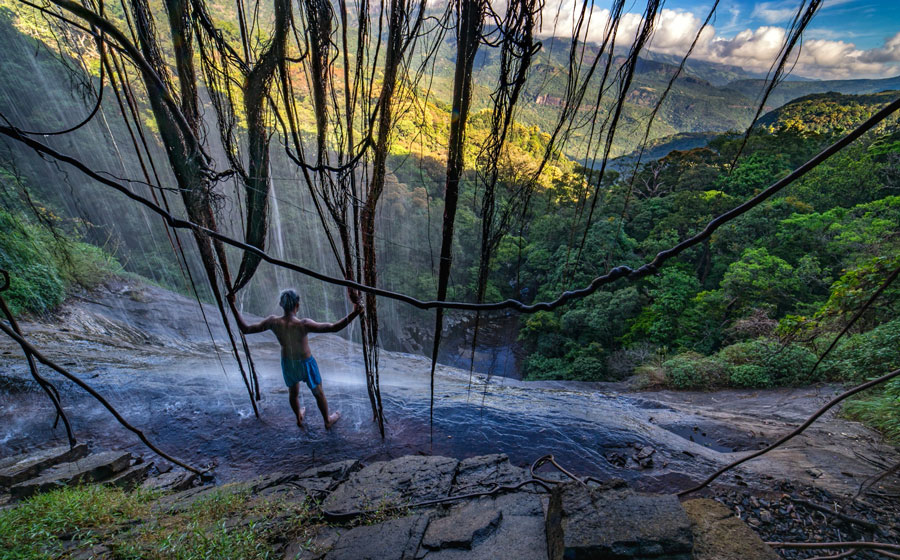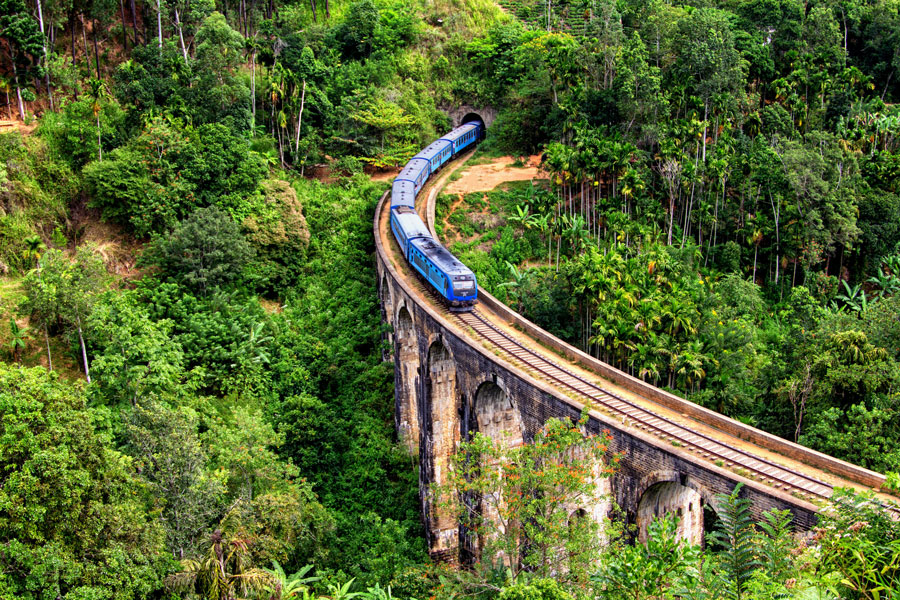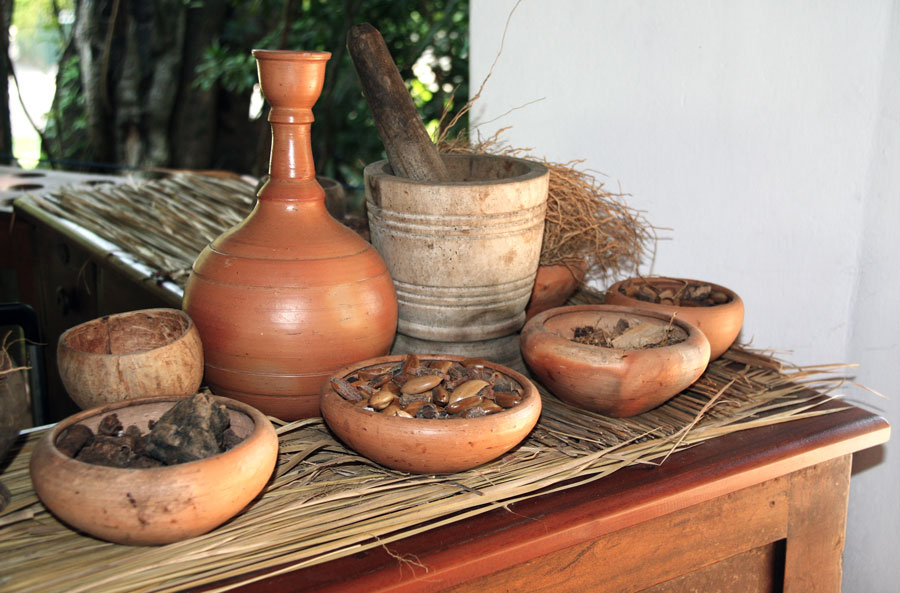
With the amazing misty mountain peaks, overflowing waterfalls, melodies of wildlife, and thousands of unique flora and fauna species, Sri Lanka owns a bunch of fascinations. Of course, there is no harm in introducing them as the major reasons that attract one to this beautiful island. However, among these amusements, are the wonderful mountain ranges, covered with greenery! They not only contribute to enhancing the natural splendours of Sri Lanka but also to offering perfect hiking opportunities for adventure seekers from around the world. Indeed, there are a bunch of amazing locations as such on this beautiful land. Nevertheless, it is no secret that the Knuckles Mountain Range is a major highlight among them. Thus, we thought of enlightening you about this wonderful attraction through this read today!
However, if you have never heard about the Knuckles Mountain Range before, let us first give you a brief introduction about it. Before the British sovereign, locals used to call it “the Dumbara Kaduwetiya”, as the mountain range was concealed with mist most time of the day. Besides, boasting a variety of landscapes and biodiversity, the Knuckles mountain range is also where the Knuckles Forest reserve is located. The relevant authorities classified this area as a climatic reserve back in 1873, as a conservation forest in 2000, and then as a national man and biosphere reserve. Going beyond it could also become one of the two natural UNESCO world heritage sites that Sri Lanka owns, whereas the other one being the Sinharaja rain forest.
Above all, wondering where in Sri Lanka this wonderful mountain range is located? Keep calm! The following section will provide you with the answer to this question.
Where is the Knuckles Mountain Range Located?
The Knuckles mountain range lies in the Central province of Sri Lanka between the districts Kandy and Matale. Moreover, these peaks take the shape of the knuckles of a clenched fist. The five main hills, Kirigalpoththa, Gombaniya, Koboneelagala, Dotalugala, and Knuckles are located in such a way when viewed from certain areas in Kandy. In addition to the main five peaks that form the shape of the knuckles, there are around 27 cliffs that form the mountain range. Aliyawetunaela, Manigala, Yakungegala, Wamarapugala, Laggala or Lakegala, Thunthisgala or Kalupahana are some of them. Besides, situated about 3000 ft above sea level, Knuckles mountain range dominates over 18500 Ha of the island’s land. However, being a mist-laden mountain range with lush vegetation and gushing waterfalls, the beauty it adds to the surrounding is simply impressive.
How to Reach the Knuckles Mountain Range?
There are three main routes to enter the mountain range. Among them, the B-grade route that connects Hunnasgiriya and Meemure is the most popular among hikers. However, many buses travel to Hunnasgiriya from Kandy, but from there onwards, travellers have to use a private vehicle. In addition, one can find many rural and isolated villages surrounding the mountain range from where a footpath can be found which leads to the jungle. Another route to reach Knuckles from Kandy is from Kandy – Wattegama road. Moreover, there is also a route from Atanwela which can be accessed from Matale-Rattota road.
The Awe-inspiring Landscape of Knuckles
The landscape of the mountain range is so vivid with dry evergreen forests, montane forests, sub-montane forests, dry and wet patina grasslands, and savannas. The Dumbara valley is a deep gorge that is surrounded by mountains situated at the Knuckles Mountain Range. Pitawala Pathana is another unique landscape that stretches up to 1000 acres in this mountain range. In fact, it is a grass plain with a rocky slab with a thin layer of oil. According to the International Union of Conservation of Nature, the Pitawala pathana is a rare grassland that evolved for thousands of years due to some geological phenomenon.
However, you can only find short and gnarled trees here, as winds are heavy at this place. In addition to all these, two escarpments, called mini world’s end similar to the world’s end at Horton plains also intensify the diversity of landscape in the area.
The Climate Condition
Knuckles hills inherit a climate that changes within a short time and still adds up to its charm. However, the forest reserve receives rains from both Northwestern and Southeastern monsoons. The average annual rainfall is about 3000-5000mm. The temperature in the thicket can vary from 5oC to 35oC degree Celsius. Winds frequent the mountains throughout the year and the speed of the wind is about 7.2 kmh-1. The mist that blankets the mountain range does nothing but add to its hypnotizing beauty.
Main Lures at the Knuckles Mountain Range
The knuckles mountain range is flaunting its lush vegetation and cascading waterfalls in every corner. It might be head wrecking to choose where to go and what to do. However, hiking, trekking, and waterfall hunting are popular activities out there, while sightseeing in rural villages like Meemure is also a possible option. Riverston is another place that attracts foreigners and tourists alike. Duwili Ella, Saree Ella, Jodu Ella, Bambarella, Hulu Ganga falls, and Dumbara Ella are a few of the cascading beauties that turn this place into a paradise.
However, as mentioned earlier, one can also find Pitawala pathana, which is a strange grassland that encounters nowhere else on the island. Moreover, two escarpments of land called the mini world’s end are among the places of tourist interest. One of them can be reached from the Hunnasgiriya – Meemure road while the other one should be accessed from Pitawala patana. In addition to all these, Corbet’s gap will give a view of the unspoiled beauty of the peaks and the rural villages below that while the Nitro cave will give one of those experiences you only encounter in tv series!
Hiking at the Knuckles Mountain Range
While Knuckles is a paradise for hikers, it is one of the most difficult hiking trails in Sri Lanka. Now, if you expect to hike, it is recommended to use the guidance of an experienced guide. Luckily there are around 34 hiking trails to explore the Knuckles mountain range. Some of them fall through rural villages and some go through waterfalls and lush forest cover. Moreover, the Knuckles mountain range gives birth to many waterfalls sprung from river Mahaweli (the longest river in the country), river Hulu, river Kalu and falls to nearby reservoirs.
Besides, let us now go through some of the best hiking trails that one can enjoy at Knuckles.
Dothalugala Nature Trails
The entrance route via Hunnasgiriya will take you through the Dothalugala nature trails which leads to the popular Dothalugala camping site. This trail starts from Deanston Knuckles Conservation Center (KCC). However, you need to get a permit to enter the KCC. Other than the Deanston mini world’s end and stunning view from Dothalugala, this trail can take you to Corbet’s gap.
Corbet’s Gap
Corbet’s gap is a deep valley between the Knuckles mountain range, and also a rain shadow area. The vegetation is a combination of wet, dry, and montane. One can score excellent panoramic views from the Corbet’s gap.
Kotaganga Seven Falls Hunting
Appropriate for a one-day hike, Kotaganga trails fall amid a neighbouring village of Knuckles Range, and Kotaganga. There is a footpath through the village that leads to the hills. Besides, Kotaganga (a river) falls in seven pieces from the top of the mountains, thus it takes the name seven falls. Moreover, hikers can climb each hill and reach the origin of the waterfalls where one can find the Thangappuwa campsite. Moreover, one can enjoy the sight of the famous knuckle shape of the mountain range from the campsite.
Tip for Kotaganga Seven Falls Hunting
You can travel from Kandy to Teldeniya by bus and catch the bus to Kotaganga from the Teldeniya bus stand. The bus will take you closer to the footpath that leads to the mountains.
Duwili Ella Trails
Knuckles Range is a hub of scenic waterfalls, but Duwili Ella is the iconic beauty among them. 40m in height, the caves behind the waterfall are the most attractive feature that it bears. One can get behind the waterfalls and this makes for perfect social media-worthy clicks! However, the Duwili Ella trail begins from the rural village Atanwala. Travellers can reach Atanwala easily, from Matale. The hike can be completed within a day. Still, 2 days are praised for the full experience. Hikers can greet about eleven waterfalls on the way (unless it’s the dry season). The Dumbara Ella which is cascading from about 20m above is the most eye-catching.
Nitro Cave
A massive cave occupied by bats!
The nitro caves are suggested to be thousands of years old. It gets its name due to the bat deposits which contain nitrate. It is better to choose this trail if you don’t mind getting a little dirty. However, choosing it would indeed become a completely different experience. The nature trail that leads to the cave starts at the Corbet’s gap.
Knuckles Conservation Forest
The Knuckles conservation forest lies in the Knuckles mountain range and is a hotspot of biodiversity. It is the home for 1033 plant species that belong to 141 families out of which 15% are endemic to Sri Lanka. 128 bird species nest in the forest and 17 of them are endemic. Wild boar, black-naped hare, mouse deer, sambar deer, elephant, purple-faced leaf monkey, squirrels, civet cats, and golden palm cat are some mammals out of the 31 mammals who call the forest reserve their home. In addition, about 20 amphibian species live here including the Leaf-nosed lizard and Kirthisinghe’s rock frog. According to IUCN, Kirthisinghe’s rock frog is classified as a critically endangered species.
Philips Gara, Blotched filamented barb, and Martenstyn barb are among the fish species that live here. Moreover, it is a utopia for butterflies, making it a home for 60 types of butterflies, out of which Birdwing and Blue Mormon are endemic to Sri Lanka.
The Fascination of Bird Watching at Knuckles
Knuckles reserve is a paradise for birdwatchers and ornithologists as many of the rare birds can be observed in their natural habitat. If you are one of them, an evening stroll in search of these amazing creatures will definitely surprise you.
List of Commonly Visible Birds at Knuckles
In fact, the reserve is home to 128 bird species. Further, 17 out of 23 endemic birds of Sri Lanka are frequent at this destination. Some of them are listed below.
- Sri Lankan Swallow
- Spot-winged Thrush
- Blue Magpie
- Yellow-fronted Barbets
- Black Eagle
- Sri Lanka Hanging Parrot
- Pale-billed Flowerpecker
- Barbets
- Lorikeets
- Sri Lankan White Eye
- Brahminy Kite
- Yellow Eared Bulbuls
- White-Throated Kingfisher
- Dull Blue Flycatcher
- Egrets
- Herons
- Blabbers
- Woodpeckers
Moreover, there are excursions of 1 day, 2 days, and even 3 days organized by various institutes and organizations for those who love birdwatching.
The Best Time to Hike at Knuckles
According to the tourist guides, December to February is the best time to hike the Knuckles mountain range even though the possibility of rain being moderate. During this season, the streams and waterfalls descending the hills are full of water and thus, boost eye-catchy sights. March to May, the possibility of the rain is low and is also a proper time for hiking and trekking. The chance of rain is minimal between June to September, but some water springs might have dried up.
However, the weather in the Knuckles mountain range is unpredictable, as it pays to be prepared for weather shifts. Beginning from September until November, the Knuckles range experiences rainfall. Therefore, due to hardships of travel, these hills don’t get many visitors during that period. However, the stunning and unique view of mist-enveloped hills, gloomy skies during the rainy season, make Knuckles stand out among all other hiking spots on the island.
Tips for Travelers
If you are planning to visit the Knuckles Mountain range, the following tips will surely make your experience better. So, make sure you keep them in mind!
- The area is abounding with leeches. Therefore bring with you sufficient anti-leech cream, anti-leech spray, and anti-leech socks, etc.
- Owing to the vastness of the land, the risk of getting lost is high. It is better to hike the mountains with the assistance of a qualified guide or someone who knows the area well.
- In addition, stock yourself up with enough food and water, and make sure to fill the bottles at streams you pass. The water from here is safe to drink.
- Last but not least, make sure to leave only your footprints in the reserve and to take with you everything you bring.
The Bottom Line
Indeed, trekking the Knuckles Mountain Range is one of the best things to do in Sri Lanka. Thus, explorers and nature lovers alike should not miss this wonderful attraction. And why not? A trek in Knuckles would be one of the easiest ways to get away from the crowds and your bustling lifestyles, and to soothe yourself by getting into Sri Lanka’s stunning countryside. So, if you are planning to arrive on this island, make sure you add the Knuckles Mountain Range to your must-visits. Of course, it would certainly be a decision that you never regret. Happy and Safe Travelling!


3 comments